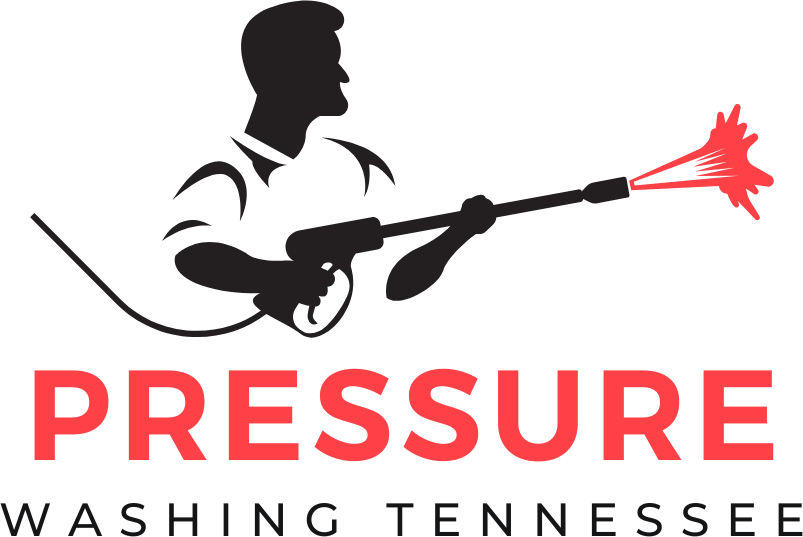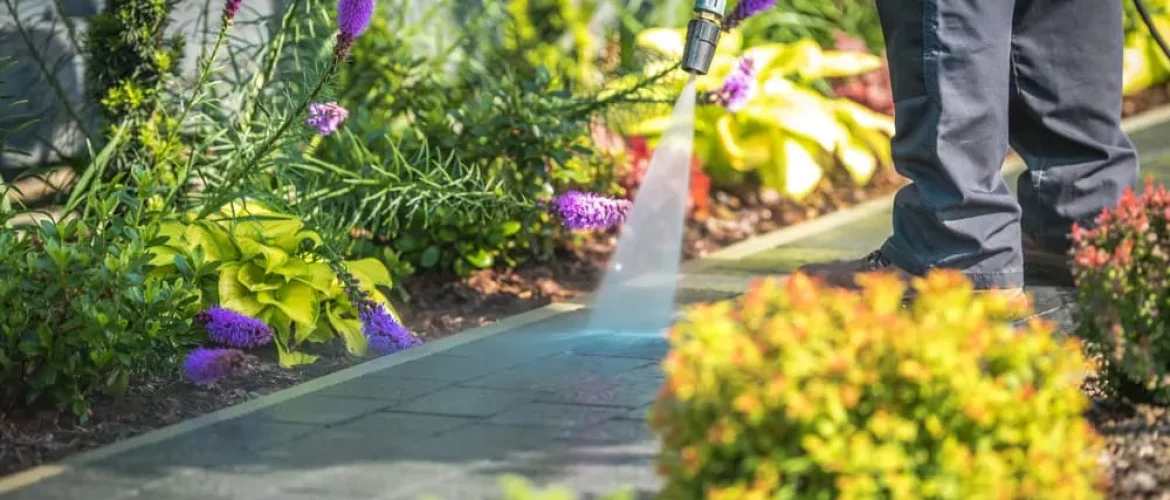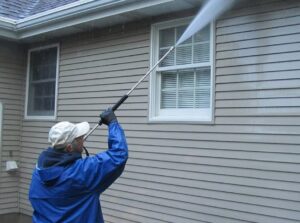When I walk into a workplace that shines from the outside in I instantly feel more confident about its safety standards. Clean walkways and spotless exteriors aren’t just about appearances—they signal a commitment to a safer environment for everyone. That’s why regular pressure washing is more than just a maintenance routine.
I’ve seen firsthand how a clean workspace reduces hazards like slippery surfaces and hidden debris. Investing in professional pressure washing isn’t just smart—it’s essential for protecting employees and visitors. If you want to boost safety and create a lasting impression pressure washing is the proactive step your workplace needs.
Understanding Workplace Safety Hazards
Workplace safety hazards often stem from surfaces that collect grime, oil, mold, or loose debris. Slippery walkways or entry points pose risks since they make slips and falls far more likely; OSHA lists these accidents as the top cause of workplace injuries. High-traffic zones, like warehouse aisles or loading docks, see frequent buildup of dust and spillage, creating hidden dangers that people can overlook during a busy day.
Dust, pollen, and pollutants accumulating on outdoor surfaces can trigger allergies, affecting air quality for both employees and visitors. Algae and mildew not only stain pavements but also create greasy areas, raising the risk of falls. These hazards go beyond cosmetic issues—they directly impact health, productivity, and the company’s safety record.
Cleaning with basic tools can’t always address the deep-seated grime or stubborn residues found on concrete, tile, or exterior stone. Persistent buildup often leads to safety code violations, which can hurt a business’s reputation and result in fines or legal action. Taking steps to identify and handle workplace safety hazards makes a noticeable difference in daily operations and long-term outcomes.
The Role Of Cleanliness In Accident Prevention
Cleanliness at work plays a big part in helping everyone steer clear of accidents. When I keep floors and walkways free from grease or grime, it makes slipping far less likely. After regular pressure washing, surfaces dry out faster so they’re not as slick, even during rainy days. In busy spots like entryways or near loading docks, removing built-up debris stops people from tripping or losing their footing.
Pressure washing also quickly gets rid of hidden dangers, such as algae, mold, or moss, that blend in with concrete. This limits the risk of employees or visitors unexpectedly slipping. OSHA reports show that cleaner spaces lead to fewer workplace injuries. My team and I keep these high-traffic zones clear, so there’s less chance of a hazard going unnoticed.
Removing dust and pollutants helps prevent them from becoming airborne irritants. That creates fresher air and fewer distractions that might cause someone to lose focus or make a misstep. When I prioritize a clean work site, I support better alertness and smoother movement, which both matter when it comes to on-the-job safety.
How Regular Pressure Washing Enhances Workplace Safety
Consistent pressure washing plays a key role in keeping workplaces safer. Clean, debris-free surfaces help reduce risks and boost well-being for anyone on the property.
Removing Slippery Substances And Debris
Pressure washing quickly removes oil, grease, algae, and loose debris from walkways and work areas. Surfaces cleared of these hazards make it harder for slips and falls to happen, especially in high-traffic zones like entrances and loading docks. OSHA reports slips, trips, and falls as a top cause of workplace injuries, so staying ahead with clean surfaces directly supports safety.
Preventing Mold And Mildew Growth
Constant moisture creates the perfect spot for mold and mildew to take hold on exterior walls, loading bays, and shaded entries. Routine pressure washing disrupts this growth and washes spores away before they spread. Cleaner surfaces curb allergy triggers for employees and visitors and help businesses avoid code violations linked to mold infestations.
Improving Visibility And Signage
Pressure washing keeps dirt, dust, and buildup off of line markings, hazard signs, and directional arrows throughout any workplace. When these cues stay easy to see, team members can move safely and know the right protocols. Clear signs also help visitors find their way without confusion, cutting down on navigation mishaps and potential accidents.
Long-Term Benefits For Employees And Employers
Regular pressure washing brings lasting advantages for both team members and management, supporting workplace safety while delivering ongoing value to the business.
Boosting Employee Morale And Productivity
Clean, well-kept surroundings help people feel respected and motivated. When surfaces stay free from grime and slippery residue, it’s easier for everyone to stay focused at work. Fewer distractions from dust or odd odors contribute to a more comfortable setting, so employees can concentrate fully on tasks. Consistently tidy areas—like entrances, break rooms, and loading docks—help staff feel safer, which can encourage a positive outlook and boost overall productivity.
Reducing Liability And Insurance Costs
A pressure-washed workplace lowers slip, trip, and fall risks and that has a major impact on claims and expenses. With fewer incidents, businesses see a reduction in workers’ compensation claims and property damage. Insurance companies may offer lower premiums to organizations that minimize hazards and stay compliant with safety standards. These consistent efforts protect employees while also helping employers control insurance costs and avoid penalties.
Best Practices For Implementing Pressure Washing Routines
Planning pressure washing routines starts with identifying the areas that see the most traffic or collect the most debris. Stairways, entryways, and loading docks usually need frequent attention, especially after rainy days or busy weeks.
Setting a regular schedule makes it easy to maintain clean, safe surfaces. I recommend creating a calendar to track cleanings and adjusting it around seasonal changes or special business events. High-traffic spots often benefit from weekly cleanings, while quieter zones can stay safe with a monthly touch-up.
Using the right equipment matters too. I pick machines with enough power to handle the surface in question, which keeps sidewalks, parking lots, and warehouse floors clean without damaging them. Checking for safe water pressure levels ensures that painted stripes and hazard markings stay visible.
Paying attention to environmental guidelines keeps everything safe. I select eco-friendly detergents and make sure runoff water doesn’t affect nearby landscaping or drains.
Training the cleaning crew helps achieve consistent results. I provide step-by-step instructions and point out areas that tend to get slick or overlooked, making sure no hazard goes unnoticed.
Documenting each cleaning session, noting which surfaces were treated and any issues found, helps me spot patterns and address recurring problems before they lead to accidents. This approach not only supports a tidy appearance but also keeps workplace safety a continuous priority.
Conclusion
When I think about workplace safety I know that regular pressure washing is a step that makes a real difference. It’s not just about keeping things looking good—it’s about creating a safer environment where everyone can focus on their work without worrying about hidden hazards.
By making pressure washing a routine part of my cleaning strategy I’m showing my team and visitors that their safety matters. It’s a simple investment that pays off in fewer accidents better morale and a reputation for responsibility.


